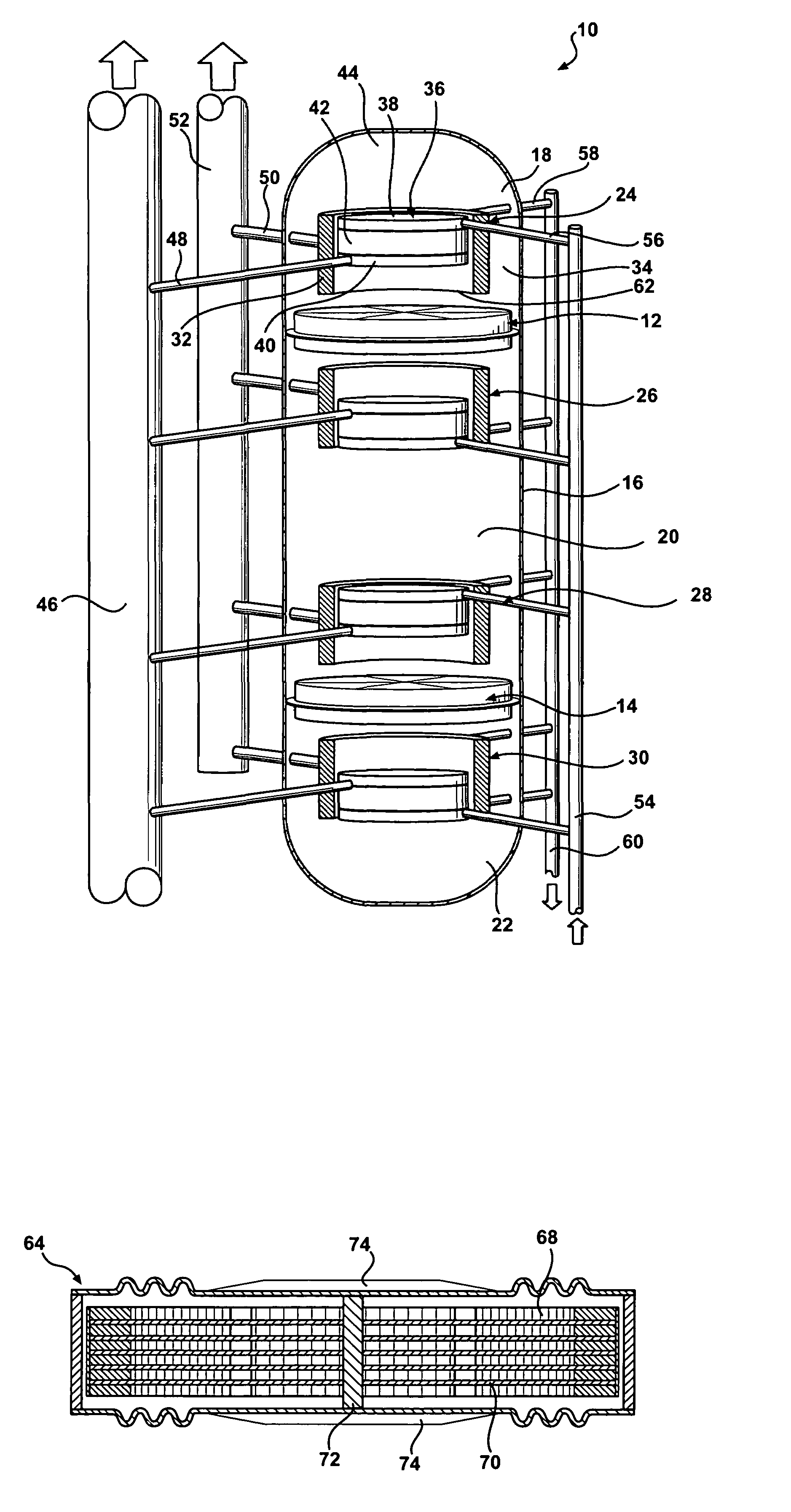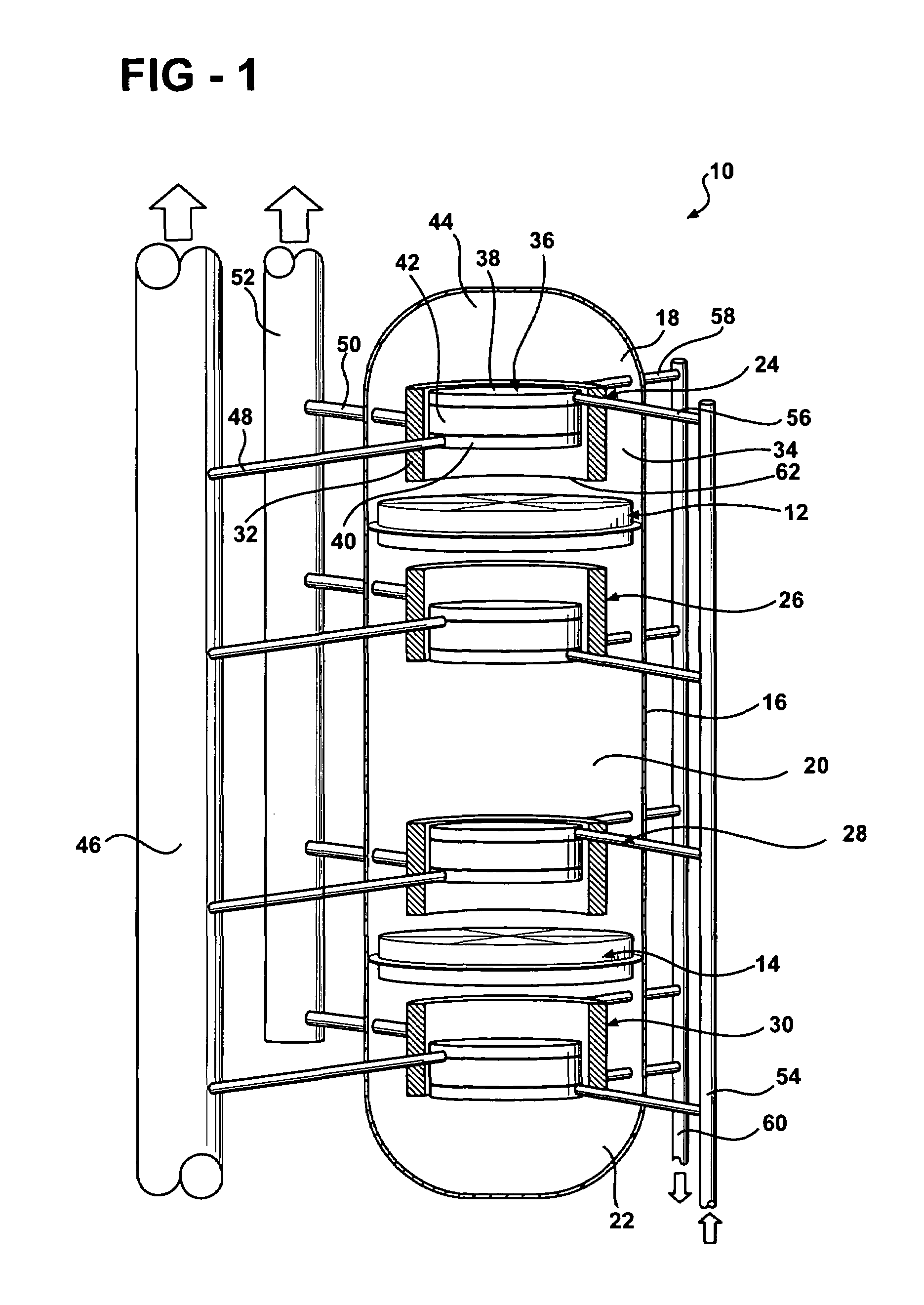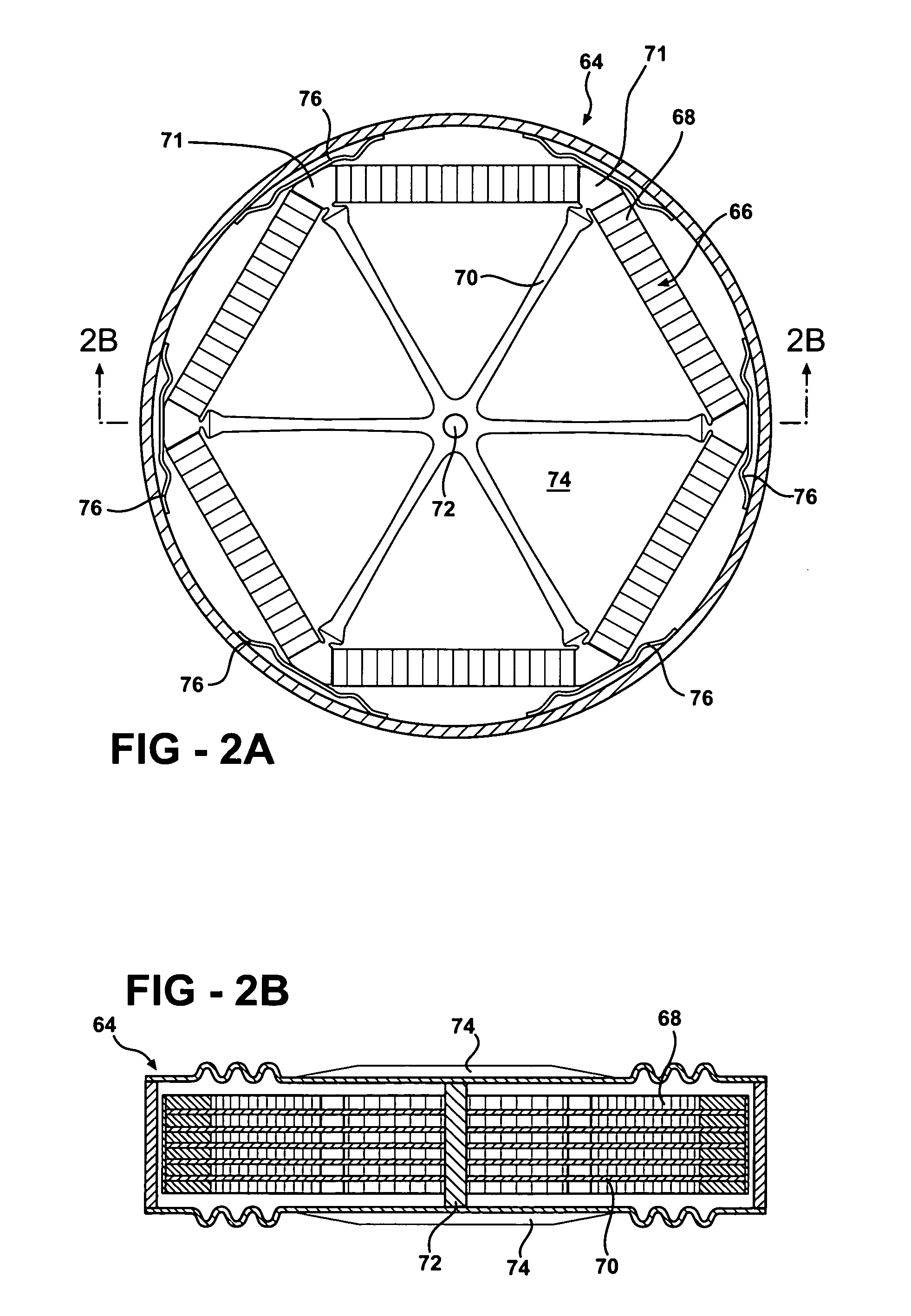Thermoacoustic piezoelectric generator
a piezoelectric generator and piezoelectric technology, applied in the direction of generator/motor, machine/engine, lighting and heating apparatus, etc., can solve the problems of limiting the operating frequency of the engine, the penetration of the pressure vessel, and the sliding seal of the pressure vessel necessary for connecting rods and moving pistons,
- Summary
- Abstract
- Description
- Claims
- Application Information
AI Technical Summary
Benefits of technology
Problems solved by technology
Method used
Image
Examples
example 1
Ring Alternator
[0072]A first preferred embodiment of the alternator is the quadratically driven piezoelectric ring transducer or alternator 64 of FIGS. 2A and 2B. The transducer consists of a ring 66 of piezoelectric material 68, such as the poled ceramic lead-zirconate-titanate PZT, attached to sets of flexible radial spokes 70 via keystone-like supports 71. Other piezoelectric materials may be used, as will be clear to those of skill in the art. The ring 66 can be circular or polygonal; a hexagon with six sets of spokes is shown in the figure. Other shapes are also possible. The ring 66 may also be referred to as a perimeter member that includes a portion of piezoelectric material. The member is configured such that compression of the perimeter member causes compression of the piezoelectric portion. In the illustrated embodiment, the piezoelectric material forms substantially all of the straight segments extending between the supports 71, located at the intersection zones between ...
example 2
[0078]A second embodiment of a piezoelectric alternator 78 that presents a mass impedance to the thermoacoustic engines, thus reducing the necessary size of the pressure-vessel / acoustic-resonator, is shown in the two cutaway views of FIGS. 4A and 4B, drawn generally to scale. For definiteness, the figures show the core of a 2.0 kW thermoacoustic-Stirling piezoelectric generator. In one version, the steel pressure-vessel / acoustic-resonator 80 is 36 cm (14″) long, 15 cm (6″) in diameter at the ends, and bulges to 23 cm (9″) diameter at the center. The resonator is filled with 10 atmosphere (150 psi) of helium gas. The walls of the resonator are 0.65 mm thick in the small diameter regions and 1.0 mm thick near the center to perform safely as a pressure vessel. Other dimensions, working fluids and pressures, of course, are possible.
[0079]Two flexible diaphragms 82 and 84 are located in the center of the resonator. In this embodiment, the diaphragms form the movable fac...
example 3
Ring Alternator with Spokes and Azimuthal Springs
[0093]Azimuthal springs may be added to the embodiment of the alternator in FIGS. 2A and 2B, as shown in FIG. 5, to lower the ring resonant frequency in the generator to twice the acoustic frequency. This embodiment shares with the embodiment of FIGS. 2A and 2B two force amplifying mechanisms for matching the mechanical impedance of the transducer to that of the engine: the conversion of axial force on the hub 104 into radial tension on the spokes 105, and the conversion of tension in the spokes to compression of the ring 106.
[0094]The alternator 103 of FIG. 5 may be used in place of the alternator of FIGS. 2A and 2B. As with the alternator of FIGS. 2A and 2B, the alternator 103 includes a ring 106 of piezoelectric material that forms a perimeter member. The ring includes stacks of piezoelectric material extending between supports 108. Azimuthal springs 107 are placed between the stack of piezoelectric material and each support 108. T...
PUM
 Login to View More
Login to View More Abstract
Description
Claims
Application Information
 Login to View More
Login to View More - R&D
- Intellectual Property
- Life Sciences
- Materials
- Tech Scout
- Unparalleled Data Quality
- Higher Quality Content
- 60% Fewer Hallucinations
Browse by: Latest US Patents, China's latest patents, Technical Efficacy Thesaurus, Application Domain, Technology Topic, Popular Technical Reports.
© 2025 PatSnap. All rights reserved.Legal|Privacy policy|Modern Slavery Act Transparency Statement|Sitemap|About US| Contact US: help@patsnap.com



